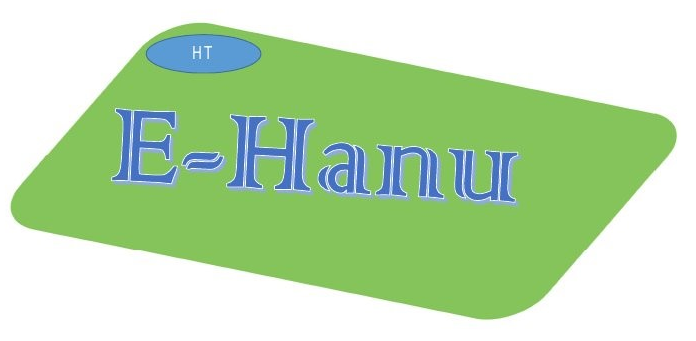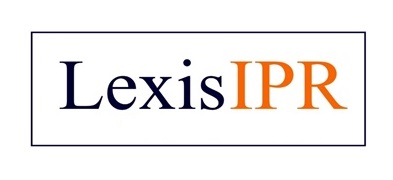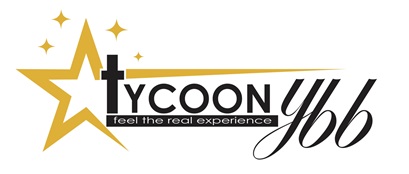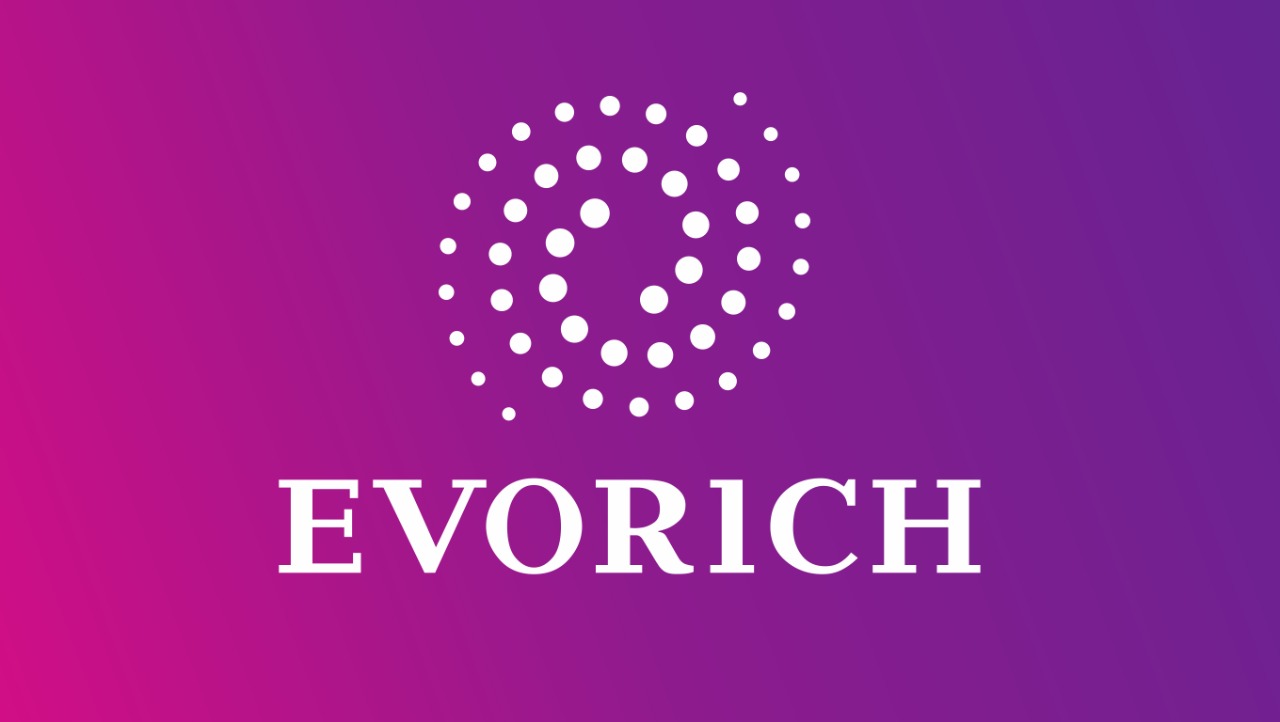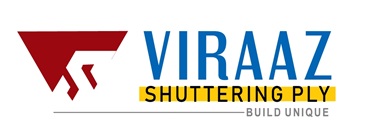Income Tax Return Filing
Incorporation & Registration, NGO Registration, Company Compliances, Corporate Contract Drafting, Manage Finance & Accounting, Taxation, Government Mandatory Registration
3000 +
Happy clients
300 +
Advocate, CA, CS
10 +
Associates Offices
Request A Call Back
What is an income tax return?
An income tax return is a form where taxpayers declare their taxable income, deductions, and tax payments. This procedure of filing income tax returns is referred to as income tax filing. While filing the actual return, the total amount that should go to the government as income tax is calculated. If you’ve paid more tax than needed for the financial year, you’ll be refunded by the income tax department. Sometimes, you may also see that you have underpaid taxes for the year. In such cases, you must pay the remainder of the tax, and file your income tax returns.
Income tax return form ranges from ITR 1 to ITR 7, used for different types of income. Some income tax return forms are longer than the others, and they may need additional disclosures such balance sheet and profit and loss statement.

What are the details you need when you’re e-filing your income tax returns?
- You’ll need to produce basic information such as PAN, Aadhar card number, and current address.
- Details about all the bank accounts you’ve held in the given financial year. This is a mandatory disclosure you must make for e filing your income tax returns.
- Details about your income from salary, fixed deposits, savings bank account, etc.
- Information of all the deductions you’ve claimed under Section 80.
- You’ll also need to produce tax payment information such as TDS and advance tax payments.
What are the forms for Income tax return filing?
S. No
ITR
Description
1.
ITR 1
For individuals being a resident other than not ordinarily resident having Income from Salaries, one house property, other sources (Interest etc.) and having total income upto Rs.50 lakh
2.
ITR 2
For Individuals and HUFs not having income from profits and gains of business or profession
3.
ITR 3
Income from profits and gains of business or profession from Individuals sand HUFs
4.
ITR 4
For presumptive income from Business & Profession
5.
ITR 5
For persons other than:-
(i)Individual,
(ii)HUF,
(iii)Company, and
(iv) Person filing Form ITR-76.
ITR 6
Companies except companies claiming exemption under section 11
7.
ITR 7
For persons including companies required to furnish return under sections 139(4A) or 139(4B) or 139(4C) or 139(4D) or 139(4E) or 139(4F)
Income Tax Slabs Slabs for FY 2023-24 in India
Income tax slab are announced by the finance minister every year. This year, finance minister Nirmala Sitharaman announced the Union Budget 2023 on 1 February 2023. The latest budget has introduced certain changes to the existing income tax slab. Currently, there are two different Income Tax regimes. Under both the new regime and the old regime, taxpayers can avail of tax benefits. The finance minister announced that under the new tax regime, the rebate for income tax had been increased to Rs.7 lakh from the earlier limit of up to Rs.5 lakh. There were also certain changes under the tax slab for the new tax regime. Apart from that, the surcharge rate on Income of Rs.5 crore and above has decreased from 37% to 25%.
Revised Income Tax Slabs for the New Tax Regime (default) FY 2023–24:
- Up to Rs.3 lakh – 0% (Nil)
- Rs 3 lakh to 6 lakh – 5%
- Rs 6 lakh to 9 lakh – 10%
- Rs 9 lakh to Rs 12 lakh – 15%
- Rs 12 lakh to Rs 15 lakh – 20%
- Above Rs 15 lakh – 30%
Note: You can now file your taxes through the New income tax portal. The new portal has many features designed to ease the tax filing process.
What is Income Tax Slab? Income Tax Slab is defined as the Individual taxpayers who will need to pay the income tax based on the slab system they fall under. Depending on the individual’s Income, he/she may fall under a different tax slab. Therefore, individuals with a higher income will need to pay more taxes. The slab system was introduced to maintain a fair tax system in the country. The slabs tend to change at every budget announcement.
New Income Tax Slab for FY 2023 – 2024: Given below are the various tables for the Revised Income Tax Slabs and rates for the FY 2023 – 2024:
New Regime Income Tax Slab Rates for Individual | |
Income Tax Slab | Income Tax Rate |
Up to Rs.3,00,000 | Nil |
Rs.3,00,000 to Rs.6,00,000 | 5% |
Rs.6,00,000 to Rs.9,00,000 | 10% |
Rs.9,00,000 to Rs.12,00,000 | 15% |
Rs.12,00,000 to Rs.15,00,000 | 20% |
Above Rs.15, 00,000 | 30% |
Note: New income tax rates are optional
Things you Must Keep in Mind before opting for New Regime: There are a few things you must keep in mind before opting for the new regime
- The option can be exercised on or before every previous year if you do not have any business income as an individual or a member of a Hindu Undivided Family (HUF).
- As a taxpayer, once you choose the next tax regime as your option, you cannot change it during the year. If you withdraw your option for the next tax regime and revert to the old tax regime, you can again opt for the new tax regime during the financial year.
COMPARISON BETWEEN FY 2023-24 & 2022-23 FOR NEW TAX REGIME
Income Tax Rates | FY 2022-23 Income Tax Slab | FY 2023-24 Income Tax Slab |
NIL | Rs.0 – Rs.2.5 lakh | Rs.0 – Rs.3 lakh |
5% | Rs.2.5 lakh – Rs.5 lakh | Rs.3 lakh – Rs.6 lakh |
10% | Rs.5 lakh – Rs.7.5 lakh | Rs.6 lakh – Rs.9 lakh |
15% | Rs.7.5 lakh – Rs.10 lakh | Rs.9 lakh – Rs.12 lakh |
20% | Rs.10 lakh – Rs.12.5 lakh | Rs.12 lakh – Rs.15 lakh |
25% | Rs.12.5 lakh – Rs.15 lakh | – |
30% | Above Rs. 15 lakhs | Above Rs. 15 lakh |
You must note that under the new tax regime, the rebate for income tax has been increased to Rs.7 lakh from the earlier limit of up to Rs.5 lakh.
Deductions and Exemptions under New Tax Regime: Certain deductions and exemptions present under the old tax regime will not be applicable under the new tax regime. Around 70 deductions and exemptions that are present in the old tax regime will not be applicable in the new tax regime. Some of the common deductions that are allowed and not allowed in the new tax regime are mentioned below:
Deductions that are Allowed
- Travelling allowance in the case of transfer or for employment
- Apart from additional depreciation, other deductions under Section 32
- Deduction under Section 80JJAA for new employees (employment)
- Any investments that are made in the Notified Pension Scheme (Section 80CCD(2))
- Any conveyance allowance due to work travel
- Specially abled individuals will be provided transport allowance
Deductions that are Not Allowed
- Housing Loan interest under Section 24
- Professional tax
- Standard deduction on salary
- Special allowances under Section 10(14).
- Children education allowance
- Helper allowance
- Relocation allowance
- Conveyance allowance
- House Rent Allowance
- Leave Travel Allowance
Given below is an example of how income tax is calculated for FY 2023-24 under the New tax regime (optional):
Total Income (Gross) | Rs.12,00,000/- |
Deductions (80C, 80CCD) | – |
HRA | – |
Travel and Medical Allowance | – |
Income that is Taxable | Rs.12 lakh |
Up to Rs.3 lakh | – |
Above Rs.3 lakh – Rs.6 lakh | Rs.15,000 |
Above Rs.6 lakh – Rs.9 lakh | Rs.30,000 |
Above Rs.9 lakh – Rs.12 lakh | Rs.45,000 |
Above Rs.12 lakh – Rs.15 lakh | – |
Total Tax that must be Paid | Rs.90,000 |
Income Tax slabs & Rates as Per Old Regime FY 2023 – 2024: Given below are the three tables for the alternative Income Tax Slabs:
Income Tax Slab for Individual who are below 60 years
Income Tax slab | Tax Rate |
Up to Rs.2.5 lakh | Nil |
Above Rs.2.50 lakh – Rs.5.00 lakh | 5% of the total income that is more than Rs.2.5 lakh + 4% cess |
Above Rs.5 lakh – Rs.10 lakh | 20% of the total income that is more than Rs.5 lakh + Rs.12,500 + 4% cess |
Above Rs.10 lakh | 30% of the total income that is more than Rs.10 lakh + Rs.1,12,500 + 4% cess |
Individuals who have an income of less than Rs.5 lakh are eligible for tax deductions under Section 87A:
How Income Tax is calculated under Old Regime for 3 individuals (A, B, and C) | |||
Components | A | B | C |
Annual Salary (Rs.) | 5,00,000 | 10,00,000 | 15,00,000 |
Standard Deduction (Rs.) | 50,000 | 50,000 | 50,000 |
Tax deductions under Section 80C of the Income Tax Act (Rs.) | 70,000 | 1,50,000 | 1,50,000 |
House Rent Allowance deductions | 82,000 | 90,000 | 1,40,000 |
Gross total income after deductions (Rs.) | 2,88,000 | 7,00,000 | 11,50,000 |
Up to Rs.2.5 lakh (Rs.) | Nil | Nil | Nil |
From Rs.2,50,001 to Rs.5 lakh (Rs.) | 1,900 | 12,500 | 12,500 |
From Rs,5,00,001 to Rs.10 lakh (Rs.) | NIL | 40,000 | 1,00,000 |
Above Rs.10 lakh (Rs.) | NIL | NIL | 45,000 |
Total Tax (Rs.) | 1,900 | 52,500 | 1,57,500 |
Deductions under Section 87A (Rs.) | 1,900 | Nil | Nil |
Additions of cess (Rs.) | Nil | 2,100 | 6,300 |
Total payable Tax (Rs.) (Total Tax + cess – Deductions under Section 87A) | Nil | 54,600 | 1,63,800 |
Income Tax Slab for Senior Citizens (60 to 80 years)
Income Tax slabs | Tax Rate |
Up to Rs.3 lakh | Nil |
Above Rs.3.00 lakh – Rs.5.00 lakh | 5% of the total income that is more than Rs.3 lakh + 4% cess |
Above Rs.5.00 lakh – Rs.10 lakh | 20% of the total income that is more than Rs.5 lakh + Rs.10,500 + 4% cess |
Above Rs.10 lakh | 30% of the total income that is more than Rs.10 lakh + Rs.1,10,000 + 4% cess |
How Income Tax is Calculated for 3 individuals (A, B, C) | |||
Components | A | B | C |
Annual Salary (Rs.) | 5,00,000 | 10,00,000 | 15,00,000 |
Standard deduction (Rs.) | 50,000 | 50,000 | 50,000 |
Tax deductions under Section 80C of the Income Tax Act (Rs.) | 70,000 | 1,50,000 | 1,50,000 |
House Rent Allowance deductions (Rs.) | 82,000 | 90,000 | 1,40,000 |
Gross total income after deductions (Rs.) | 2,88,000 | 7,00,000 | 11,50,000 |
Up to Rs.3 lakh (Rs.) | Nil | Nil | Nil |
From Rs.3,00,001 to Rs.5 lakh (Rs.) | Nil | 10,500 | 10,500 |
From Rs,5,00,001 to Rs.10 lakh (Rs.) | Nil | 40,000 | 99,500 |
Above Rs.10 lakh (Rs.) | Nil | Nil | 45,000 |
Total Tax (Rs.) | Nil | 50,500 | 1,55,000 |
Deductions under Section 87A (Rs.) | Nil | Nil | Nil |
Additions of cess (Rs.) | Nil | 2,020 | 6,200 |
Total payable Tax (Rs.) | Nil | 52,520 | 1,61,200 |
Income Tax Slabs for Individual above 80 years (Super Senior Citizen)
Income Tax slabs | Tax Rate |
Up to Rs.5 lakh | Nil |
Above Rs.5 lakh – Rs.10 lakh | 20% of the total income that is more than Rs.5 lakh + 4% cess |
Above Rs.10 lakh | 30% of the total income that is more than Rs.10 lakh + Rs.1,00,000 + 4% cess |
Given below is an example of how income tax is calculated for 3 individuals (A, B, C)
Components | A | B | C |
Annual Salary (Rs.) | 5,00,000 | 10,00,000 | 15,00,000 |
Standard deduction (Rs.) | 50,000 | 50,000 | 50,000 |
Tax deductions under Section 80C of the Income Tax Act (Rs.) | 70,000 | 1,50,000 | 1,50,000 |
House Rent Allowance deductions | 82,000 | 90,000 | 1,40,000 |
Gross total income after deductions (Rs.) | 2,88,000 | 7,00,000 | 11,50,000 |
Computation of tax on the gross total income | – | – | – |
Up to Rs.5 lakh (Rs.) | Nil | Nil | Nil |
From Rs,5,00,001 to Rs.10 lakh (Rs.) | – | 40,000 | 1,00,000 |
Above Rs.10 lakh (Rs.) | – | – | 45,000 |
Total Tax (Rs.) | Nil | 40,000 | 1,45,000 |
Deductions under Section 87A (Rs.) | Nil | Nil | Nil |
Additions of cess (Rs.) | Nil | 1,600 | 5,800 |
Total tax that is payable (Rs.) | Nil | 41,600 | 1,50,800 |
For Domestic Companies, The Tax-Slabs Depends on Turnover as Mentioned Below
Turnover | Tax Rate |
Gross turnover can be a maximum of Rs.250 crore for the previous year | 25% |
Gross turnover is more than Rs.250 for the previous year | 30% |
Apart from the above-mentioned tax rate, an additional surcharge and cess are levied. Given below are the details of the surcharge and the cess that will be levied:
- Cess: 4% of corporate tax
- Surcharge: If the taxable Income is more than Rs.1 crore but less than Rs.10 crore, the surcharge levied is 7%. If the taxable Income is more than Rs.10 crore, the surcharge levied is 12%.
- Non-resident Indians: For non-resident Indians, irrespective of their age, the exemption limit is up to Rs.2.5 lakh.
Important Points
- In case your net Income is more than Rs.50 lakh but less than Rs.1 crore, apart from a 4% cess, a 10% surcharge is also levied. If the net is above Rs.1 crore, a 15% surcharge is levied.
- Compared to last year’s budget, cess has increased from 3% to 4%.
Old Tax Regime Vs New Tax Regime with Example
- Under the old tax regime, more benefits are offered to individuals who make several investments and earn a high income.
- The new tax regime benefits individuals who make fewer investments in tax-saving schemes.
- It is important to analyse both tax schemes before choosing one, as the benefits will vary from individual to individual.
AN EXAMPLE of the net tax that is payable under the old tax regime and the new tax regime is mentioned in the table below:
Category | New Tax Regime | Old Tax Regime |
Yearly Income | Rs.40 lakh | Rs.40 lakh |
– | Rs.30,000 | |
– | Rs.25,000 | |
– | Rs.75,000 | |
– | Rs.50,000 | |
– | Rs.1.50 lakh | |
Standard Deduction | Rs.50,000 | Rs.50,000 |
Net Taxable Income | Rs.39.50 lakh | Rs.36.20 lakh |
Total Tax Payable | Rs.9,20,400 | Rs.9,34,440 |
Current Surcharge Rates for Different Taxpayers
When an assessee’s income exceeds the limits specified by the Income Tax Department, a surcharge is levied on the amount of the income tax. The rates for a surcharge are listed below:
Surcharge Rates for FY2023-24
- Less than Rs.50 lakhs – NIL
- From Rs.50 lakhs to Rs.1 crore – 10%
- From Rs.1 crore to Rs.2 crore – 15%
- From Rs.2 crore to Rs.5 crore – 25%
- More than Rs.5 crore – 37%
Time to choose New Regime or Old Regime
Type of income | When to choose between the old and new regimes |
Salary income or any other type of income that triggers TDS | An employee can opt for the new tax regime at the beginning of financial year. However, once chosen they cannot revert back to the old regime and can only change the option of selecting the tax regime at the beginning of the new financial year |
Income from Profession and Business | In case of income from profession and business, the option to choose between the tax regimes is available only once. |
New Tax Slab Rates for Domestic Companies | ||
Type | Old regime Tax rates | New Regime Tax rates |
The company chooses section 115BAB and is registered on or after 1 October 2019 and has commenced manufacturing on or before 31 March 2023. | – | 15% |
The company chooses Section 115BAA, wherein the total Income of a company has been calculated where specified deductions, incentives, exemptions, and additional depreciation have not been claimed. | – | 22% |
The company chooses section 115BA, registered on or after 1 March 2016, and is engaged in the manufacture of any item, and no deduction claim as specified in the section clause has been made. | – | 25% |
If a company’s turnover is less than Rs. 400 crore in the previous year, 2018-19 | 25% | 25% |
Any other domestic company | 30% | 30% |











